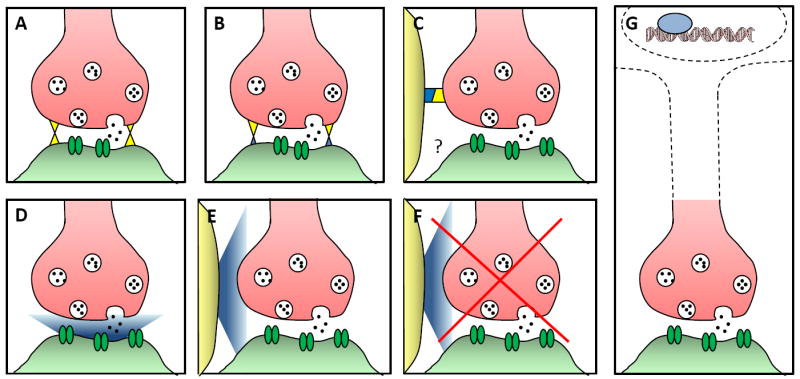Figure 1.

A schematic diagram of different molecular mechanisms that can give rise to synaptic specificity. A) Homophilic adhesion between pre- and postsynaptic partners (e.g. Sidekick, Dscam, N-cadherin, Capricious); B) Heterophilic adhesion between pre- and postsynaptic partners (e.g. neurexins and neuroligins, LAR and NGL-3); C) Heterophilic adhesion between the presynaptic neuron and a guidepost cell (e.g. SYG-1 and SYG-2); D) Secreted synaptogenic molecule produced by the presynaptic or the postsynaptic partner (e.g. Wnt7a, FGF22); E) Secreted synaptogenic molecule produced by a guidepost cell (e.g. Netrin, Thrombospondins); F) Secreted antisynaptogenic molecule produced by a guidepost cell (e.g. Netrin, Wnts); G) Lineage, fate and timing of development can lead to synaptic specificity via transcriptional mechanisms (e.g. UNC-4, Sequoia).
